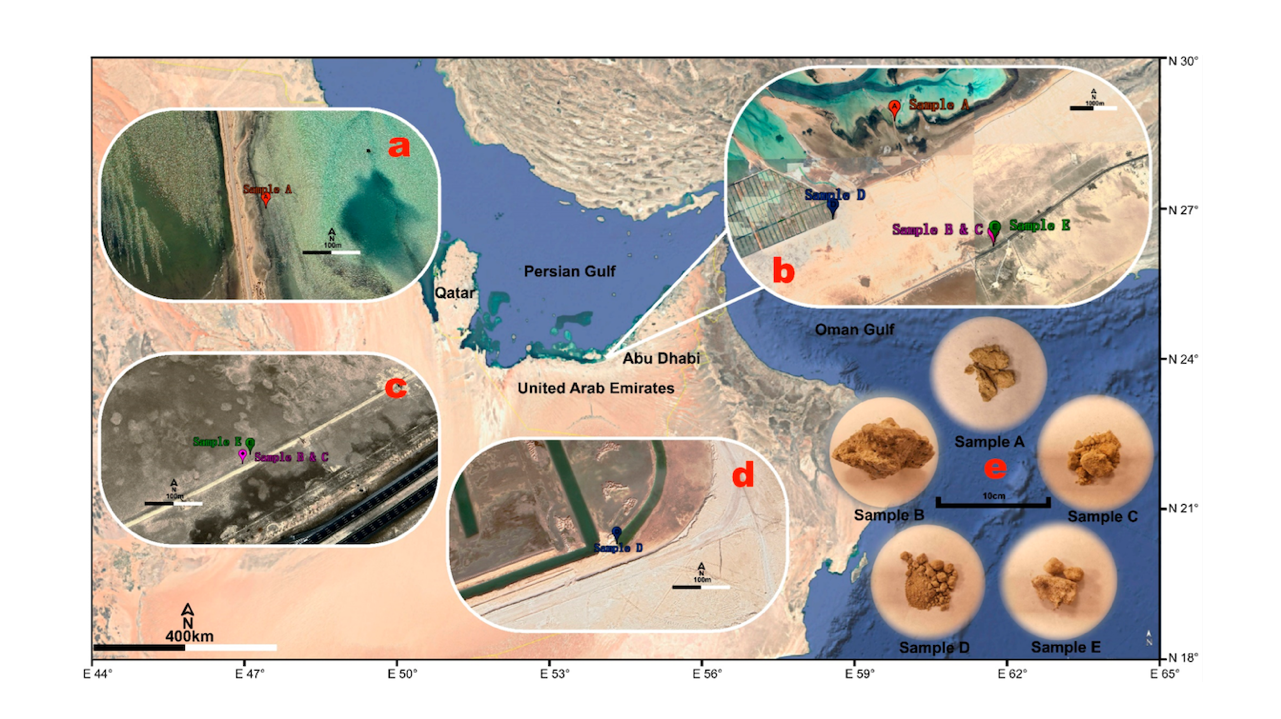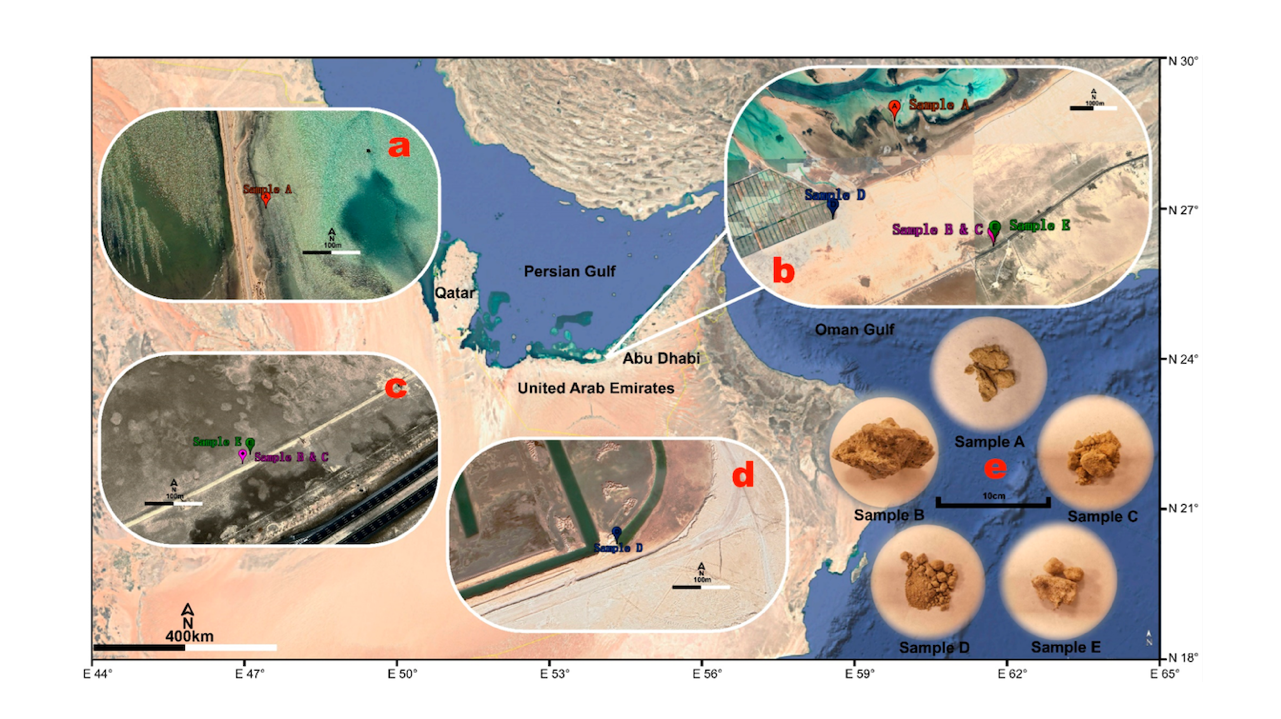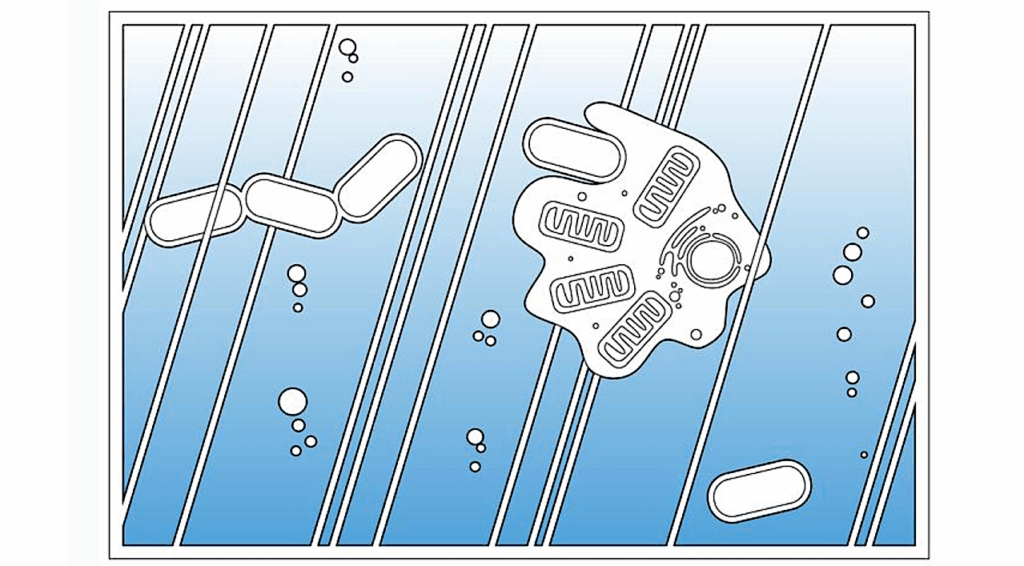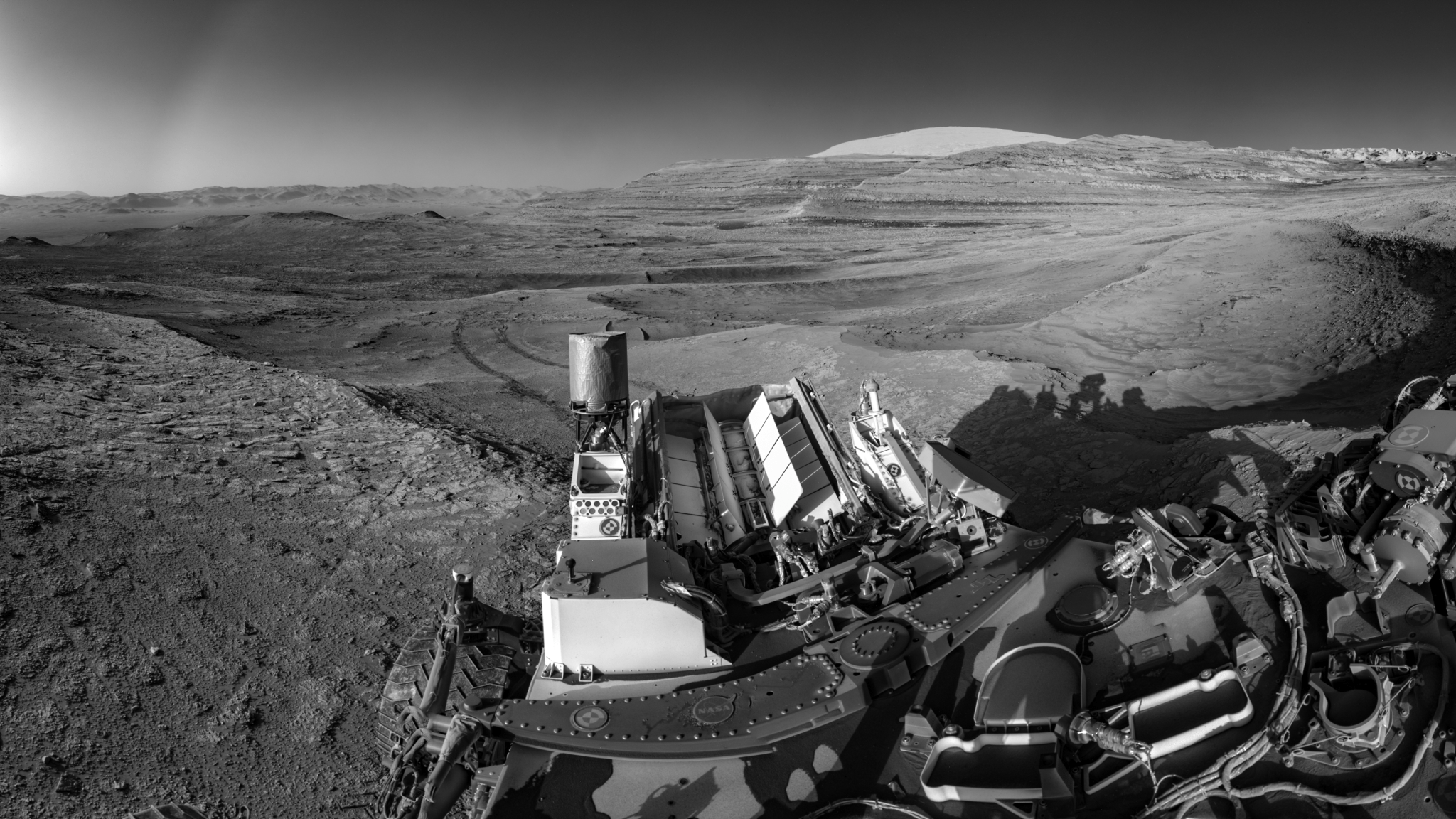Now Reading: Comparing Protein Stability in Modern and Ancient Sabkha Environments: Implications for Molecular Remnants on Ancient Mars
-
01
Comparing Protein Stability in Modern and Ancient Sabkha Environments: Implications for Molecular Remnants on Ancient Mars
Comparing Protein Stability in Modern and Ancient Sabkha Environments: Implications for Molecular Remnants on Ancient Mars


Distribution of sample locations across sabkha units of different ages along the northern coast of the United Arab Emirates. (a) Sampling locations at various outcrops, including Sample A from modern deposits and Samples B and C from a young sabkha terrace. (b) Detailed view of the sampling site for Sample A in the modern sabkha. (c) Image of the lower sabkha terrace where Samples B and C were collected, along with the location of Sample E, which was obtained from a precipitated brine in modern sabkha waters. (d) Upper sabkha terrace showing the sampling site for Sample D. (e) Overview of the five analyzed samples used for protein studies. International Journal of Molecular Sciences via PubMed
Understanding the mechanisms of protein preservation in extreme environments is essential for identifying potential molecular biosignatures on Mars.
In this study, we investigated five sabkha sedimentary samples from the Abu Dhabi coast, spanning from the present day to ~11,000 years before present (BP), to assess how mineralogy and environmental conditions influence long-term protein stability.
Using LC-MS/MS and direct Data-independent Acquisition (DIA) proteomic analysis, we identified 722 protein groups and 1300 peptides, revealing a strong correlation between preservation and matrix composition. Carbonate- and silica-rich samples favored the retention of DNA-binding and metal-coordinating proteins via mineral–protein interactions, while halite- and gypsum-dominated facies showed lower recovery due to extreme salinity and reduced biomass input.
Functional profiling revealed a shift from metabolic dominance in modern samples to genome maintenance strategies in ancient ones, indicating microbial adaptation to prolonged environmental stress.
Contrary to expectations, some ancient samples preserved large, multi-domain proteins, suggesting that early mineral encapsulation can stabilize structurally complex biomolecules over millennial timescales. Taxonomic reconstruction based on preserved proteins showed broad archaeal diversity, including Thaumarchaeota and thermophilic lineages, expanding our understanding of microbial ecology in hypersaline systems.
These findings highlight sabkhas as valuable analogs for Martian evaporitic environments and suggest that carbonate–silica matrices on Mars may offer optimal conditions for preserving ancient molecular traces of life.
Comparing Protein Stability in Modern and Ancient Sabkha Environments: Implications for Molecular Remnants on Ancient Mars, Int J Mol Sci via PubMed
Astrobiology,
Stay Informed With the Latest & Most Important News
Previous Post
Next Post
-
 012024 in Review: Highlights from NASA in Silicon Valley
012024 in Review: Highlights from NASA in Silicon Valley -
 02Panasonic Leica Summilux DG 15mm f/1.7 ASPH review
02Panasonic Leica Summilux DG 15mm f/1.7 ASPH review -
 03How New NASA, India Earth Satellite NISAR Will See Earth
03How New NASA, India Earth Satellite NISAR Will See Earth -
 04And Thus Begins A New Year For Life On Earth
04And Thus Begins A New Year For Life On Earth -
 05Astronomy Activation Ambassadors: A New Era
05Astronomy Activation Ambassadors: A New Era -
06SpaceX launch surge helps set new global launch record in 2024
-
 07Space Force plans new ‘Futures Command’ amid pressure to speed up modernization
07Space Force plans new ‘Futures Command’ amid pressure to speed up modernization





















